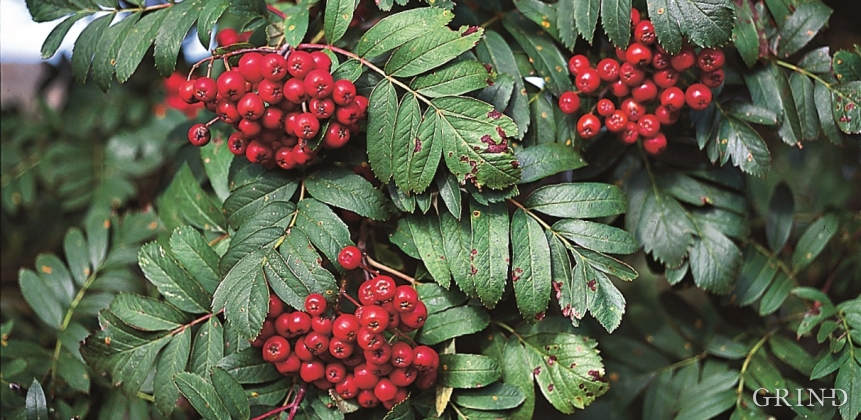Published: 21.07.2015 | Author: Bjørn Moe
Sorbus meinichii (Swedish Service Tree) is rare in Norway, but it is abundant in some parts of Sunnhordaland. It is especially common at Moster. Several different types of Sorbus meinichii are known, including species that are unknown outside of Norway.
Sorbus meinichii resembles the more usual mountain ash, but the narrowness of the leaves or notches on the leaf perimiter distinguish them. While all of the prominences on a normal mountain ash are narrow and of equal size, the prominences on the end of the Swedish service tree are triangular and clearly bigger in size. The flowers and fruits are also bigger, and the fruit tastes less sour. The Swedish service tree usually grows to be a nicely-shaped tree.
At Stord and Bømlo and in Sveio one finds two types of Sorbus meinichii (Swedish Service Tree) with red anthers. Another type has yellow anthers, similar to common mountain ash. At Huglo, on Storsøya Island and along the south side of Tysnes to Ånuglo, the so-called "fægrirogn" (or Sorbus meinichii, a subspecies of mountain ash unique to Norway) dominates. It grows larger, has bigger flowers with cream-yellow anthers and it can grow quite large fruits. There is much to suggest that the different types of Sorbus meinichii arose from cross-breeding between species.
Moster is an area where a lot of grassland fungus still grows - mushrooms that no longer are seen in many parts of the county. The beautiful splendid waxcap- mushroom is one of these. The mushroom species is seen so rarely that it is included on the list of endangered species - the red list. (Jan Rabben)




